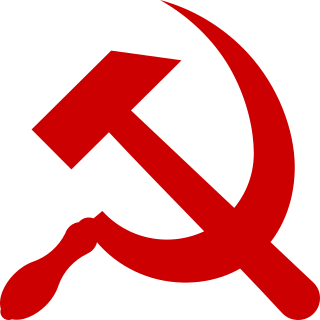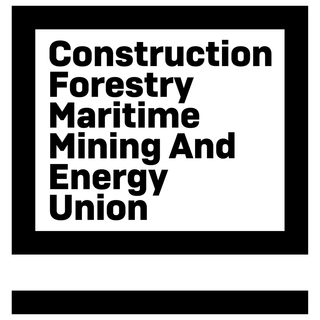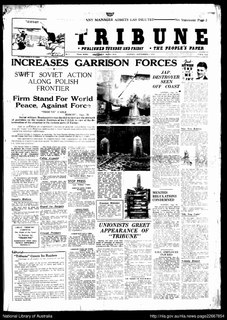Related Research Articles

Bartholomew Augustine Santamaria, usually known as B. A. Santamaria, was an Australian Roman Catholic anti-Communist political activist and journalist. He was a guiding influence in the founding of the Democratic Labor Party (DLP).

The Communist Party of Australia (CPA) was an Australian political party founded in 1920. The CPA achieved its greatest political strength in the 1940s. It was banned temporarily in 1940 and faced an attempted ban in 1951 before dissolving in 1991.

John Joseph Cahill, also known as Joe Cahill or J. J. Cahill, was a long-serving New South Wales politician, railway worker, trade unionist and Labor Party Premier of New South Wales from 1952 to his death in 1959. Born the son of Irish migrants in Redfern, New South Wales, Cahill worked for the New South Wales Government Railways from the age of 16 before joining the Australian Labor Party. Being a prominent unionist organiser, including being dismissed for his role in the 1917 general strike, Cahill was eventually elected to the Parliament of New South Wales for St George in 1925.

The Bank of New South Wales (BNSW), also known commonly as The Wales, was the first bank in Australia, being established in Sydney in 1817 and situated on Broadway. During the 19th century, the bank opened branches throughout Australia and New Zealand, expanding into Oceania in the 20th century. It merged with many other financial institutions, finally merging with the Commercial Bank of Australia in 1982 and being renamed to the Westpac Banking Corporation on 4 May that year under the Bank of New South Wales Act 1982.

The Construction, Forestry, Maritime, Mining and Energy Union is Australia's main trade union in construction, forestry, maritime, mining, energy, textile, clothing and footwear production. The CFMMEU is affiliated with the Australian Council of Trade Unions, with the Australian Labor Party and with the World Federation of Trade Unions.

Norman John Oswald Makin AO was an Australian politician and diplomat. He was an Australian Labor Party member of the Australian House of Representatives from 1919 to 1946 for Hindmarsh, from 1954 to 1955 for Sturt, and from 1955 to 1963 for Bonython. He was Speaker of the Australian House of Representatives from 1929 to 1932 and served as Minister for the Navy, Minister for Munitions (1941–1946) and Minister for Aircraft Production (1945–1946) under John Curtin, Frank Forde and Ben Chifley. He was the first President of the United Nations Security Council in 1946, and served as Ambassador to the United States from 1946 to 1951.
The New South Wales Rugby League premiership was the first rugby league football club competition established in Australia and contributor to today's National Rugby League. Run by the New South Wales Rugby League from 1908 until 1994, the premiership was the state's elite rugby league competition, parallel to Queensland's first-class league, the Brisbane Rugby League.
Australian rules football in the Australian Capital Territory has a history dating back to the formation of the territory in the 1910s and was the most popular football code in Canberra prior to the introduction of teams from the national competitions in both rugby league and rugby union.
The 1893 banking crisis in the Australian colonies involved the collapse of a considerable number of commercial banks and building societies, and a general economic depression. It occurred at the same time as the US Panic of 1893 (1893–1897).

The Australian Institute of Architects is a professional body for architects in Australia. The post-nominals of FRAIA (Fellow) and RAIA continue to be used.
The Australian Labor Party split of 1955 was a split within the Australian Labor Party along ethnocultural lines and about the position towards communism. Key players in the split were the federal opposition leader H. V. "Doc" Evatt and B. A. Santamaria, the dominant force behind the "Catholic Social Studies Movement" or "the Movement".
The Federated Shipwrights' and Ship Constructors' Association of Australia was an Australian trade union which existed between 1916 and 1976. It represented shipwrights and boatbuilders in the shipbuilding and ship repair industries, as well as sea-going shipwrights aboard vessels in the merchant navy.

Tribune was the official newspaper of the Communist Party of Australia. It was published by the Central Committee of the Communist Party of Australia from 1939 to 1991. Initially it was subtitled as Tribune: The People's Paper. It was also published as the Qld Guardian, Guardian (Melbourne), Forward (Sydney). It had previously been published as The Australian Communist, (1920-1921) The Communist, (1921-1923) and the Workers' Weekly (1923-1939).
The Australian Federated Union of Locomotive Employees (AFULE) is an Australian trade union representing railway workers. It was formerly a national union which largely merged into the Australian Rail Tram and Bus Industry Union in 1992; however, the Queensland division continued as a separate union active only in that state.
The National Union of Rail Workers of Australia (NUR) was an Australian trade union representing railway industry workers which operated from 1938 until 1993.
The Australian Transport Officers' Federation (ATOF) was an Australian trade union representing salaried officers in the transport sector, particularly in the rail and airline industries. It existed from 1924 until 1991, and was previously known as the Federation of Salaried Officers of Railways Commissioners (1924–1947) and the Australasian Transport Officers Federation (1947–1978). The union had a policy of supporting conciliation and arbitration and against strike action until 1970.
The Pulp and Paper Workers Federation of Australia (PPWF) was an Australian trade union which existed between 1913 and 1991. The PPWF represented workers in the pulp and paper industry.
The MLC Building is a landmark modernist skyscraper in the central business district of North Sydney, on a block bounded by Miller Street, Denison Street and Mount Street. Planned in 1954 and completed in 1957, the complex was designed in the modernist Post-war International style by architects, Bates, Smart & McCutcheon. Its completion marked the appearance of the first high-rise office block in North Sydney and the first use of curtain wall design. Built to provide much-needed office space for the Mutual Life & Citizens Assurance Company Limited, the building continues to be primarily-occupied by its original tenants.
Frederick James McCauley (1905-1995) was an Australian trade unionist from the Canberra and Queanbeyan region.
The Australian Telephone and Phonogram Officers Association was an Australian trade union representing telephonists, phonogram operators and telex service operators in the Australian Public Service. It existed from 1914 to 1992.
References
- 1 2 3 4 "Building Workers Industrial Union of Australia (ii) (1962 - 1991)". Australian Trade Union Archives. Retrieved 9 May 2018.
- ↑ "CARPENTERS REACH THE CENTURY". Tribune . No. 98. Sydney. 22 March 1945. p. 4. Retrieved 9 May 2018– via National Library of Australia.
- ↑ "AMALGAMATING UNIONS". The Age . No. 24, 861. Victoria, Australia. 18 December 1934. p. 9. Retrieved 9 May 2018– via National Library of Australia.
- ↑ "UNIONS COALESCE". Daily Examiner . Vol. 26, no. 8238. New South Wales. 19 December 1934. p. 5. Retrieved 9 May 2018– via National Library of Australia.
- ↑ "Building Workers' Merger". The Age . No. 27, 469. Victoria, Australia. 5 May 1943. p. 4. Retrieved 9 May 2018– via National Library of Australia.
- ↑ "CARPENTERS AFFILIATE WITH A.L.P." Newcastle Morning Herald and Miners' Advocate . No. 20, 796. New South Wales. 2 June 1943. p. 2. Retrieved 9 May 2018– via National Library of Australia.
- ↑ "Union Merger Claim Fails". The Telegraph . Brisbane. 21 March 1944. p. 2 (CITY FINAL LAST MINUTE NEWS). Retrieved 9 May 2018– via National Library of Australia.
- ↑ "Carpenters and Joiners Change Name of Union". The Telegraph . Brisbane. 14 October 1944. p. 3 (LATE WEEKEND FINAL ALL THE NEWS STUMPS SCORES). Retrieved 9 May 2018– via National Library of Australia.
- ↑ "CARPENTERS' UNION". The Worker . Vol. 55, no. 2998. Queensland, Australia. 18 December 1944. p. 12. Retrieved 9 May 2018– via National Library of Australia.
- ↑ "COURT REFUSES UNION TO CHANGE NAME". Morning Bulletin . No. 25, 402. Queensland. 16 March 1945. p. 4. Retrieved 9 May 2018– via National Library of Australia.
- ↑ "Progressives Elected By Trade Unions". Tribune . No. 81. Sydney. 14 December 1944. p. 3. Retrieved 9 May 2018– via National Library of Australia.
- ↑ "Efforts To Settle Shipbuilding Dispute". Tribune . No. 89. Sydney. 8 February 1945. p. 8. Retrieved 9 May 2018– via National Library of Australia.
- ↑ "WATERSIDE TROUBLE". The West Australian . Vol. 61, no. 18, 287. Western Australia. 19 February 1945. p. 4. Retrieved 9 May 2018– via National Library of Australia.
- ↑ "Commonwealth Attitude PEACE AT ALL COSTS ON WATERFRONT". Newcastle Morning Herald and Miners' Advocate . No. 21, 331. New South Wales, Australia. 15 February 1945. p. 3. Retrieved 9 May 2018– via National Library of Australia.
- ↑ "DEREGISTERED". The Muswellbrook Chronicle . Vol. 28, no. 66. New South Wales, Australia. 27 August 1948. p. 1. Retrieved 9 May 2018– via National Library of Australia.
- ↑ "RESERVE DECISION". Brisbane Telegraph (CITY FINAL ed.). 2 May 1952. p. 7. Retrieved 9 May 2018– via National Library of Australia.
- ↑ "NEW TURN IN BURNIE DISPUTE". The Examiner . Vol. CXI, no. 151. Tasmania, Australia. 4 September 1952. p. 5. Retrieved 9 May 2018– via National Library of Australia.
- ↑ "Has operation". The News . Vol. 59, no. 9, 080. Adelaide. 15 September 1952. p. 2. Retrieved 9 May 2018– via National Library of Australia.
- ↑ "Men seek extra height money". The Sun . No. 13, 176 (LATE FINAL EXTRA ed.). New South Wales. 23 April 1952. p. 5. Retrieved 9 May 2018– via National Library of Australia.
- ↑ "Instruction to Unionists". The Age . No. 30, 391. Victoria, Australia. 24 September 1952. p. 5. Retrieved 9 May 2018– via National Library of Australia.
- ↑ "B.W.I.U. COURT MOVE". The Mercury . Vol. CLXXI, no. 25, 433. Tasmania, Australia. 26 June 1952. p. 16. Retrieved 9 May 2018– via National Library of Australia.
- ↑ "Sydney Building Union To Defy Commission". The Canberra Times . Vol. 31, no. 9, 264. 3 September 1957. p. 9. Retrieved 9 May 2018– via National Library of Australia.
- ↑ "Unions declare for preference exchange between A.LP., C.P.A." Tribune . No. 1090. Sydney. 4 March 1959. p. 3. Retrieved 9 May 2018– via National Library of Australia.
- ↑ "Wants A.C.T.U. to organise missile base opposition". Tribune . No. 1091. Sydney. 11 March 1959. p. 1. Retrieved 9 May 2018– via National Library of Australia.
- ↑ "Australians welcome agreement with Soviet Union". Tribune . No. 1093. Sydney. 24 March 1959. p. 3. Retrieved 9 May 2018– via National Library of Australia.
- ↑ "Union To Appeal On Rival's Registration". The Canberra Times . Vol. 37, no. 10, 328. 12 September 1962. p. 13. Retrieved 9 May 2018– via National Library of Australia.
- ↑ "BWIU granted Federal registration". Tribune . No. 1295. Sydney. 6 March 1963. p. 12. Retrieved 9 May 2018– via National Library of Australia.
- ↑ "UNION TRIES TO WIN MEN BACK". The Canberra Times . Vol. 37, no. 10, 367. 27 October 1962. p. 8. Retrieved 9 May 2018– via National Library of Australia.
- ↑ "BLF joins an old 'enemy'". The Canberra Times . Vol. 67, no. 21, 212. 13 May 1993. p. 14. Retrieved 9 May 2018– via National Library of Australia.